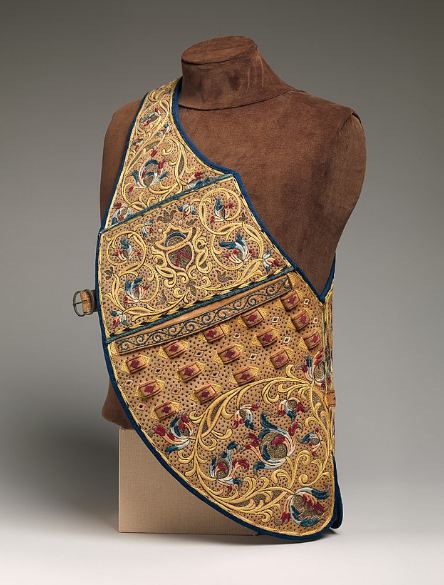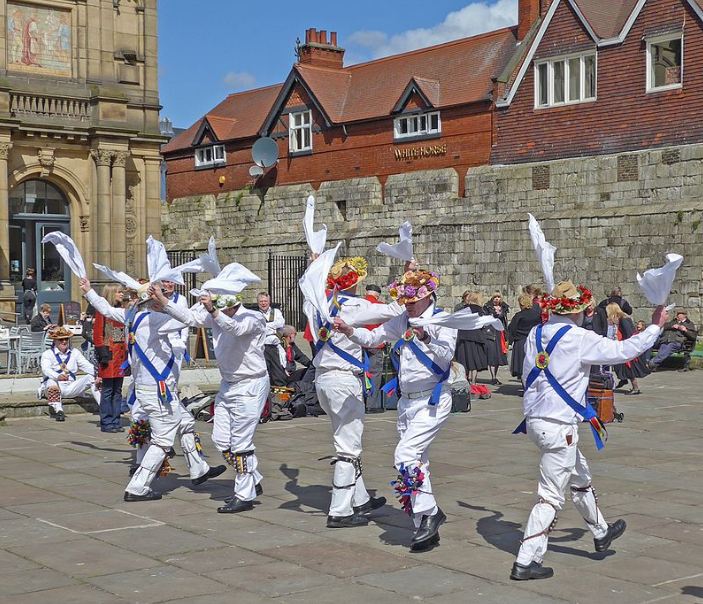Belts have been worn as an item of clothing since the Bronze Age. But in those eras and the many centuries that followed, belts were exclusively worn by men. While almost all belts are worn around the waist, only a few others are worn around other parts of the body.
One of such belts is the baldric, a broad belt that is strapped over the shoulder and worn diagonally across the chest. It is worn pretty much in a way that you do with a cross-body bag, with the strap diagonally across your body.
Like most belts, the baldric was used to serve a particular purpose – to hold weapons (such as swords and daggers) or musical instruments (such as drums and bugles). It also became fashionable from the 1500s onward. The baldric is also spelled as “baldrick,” “bawdrick,” and “bauldrick.”
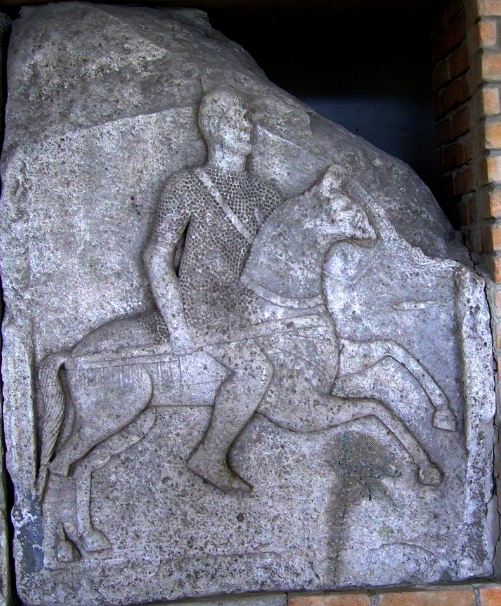
A stone carving depicting a Roman cavalryman wearing a mail shirt with a baldric over his right shoulder
Baldrics have been worn as part of military attire since the Roman Empire (27 BCE to 476 BCE). The earlier variant of the baldric, the balteus, was worn during the ancient Roman era. It was a strip of fabric commonly used to hold a sword. It was a belt typically made of leather and worn over the shoulder, crossing obliquely down the side. The balteus was often embedded with metals, precious stones, or both. The cintus was also a type of baldric also worn by the ancient Romans. It was similar to the balteus but only secured around the waist. Since then, the baldric had been the standard gear for most armies in Europe from the 14th through the 17th centuries.
While the most practical and basic baldric was usually made of leather, baldrics owned by wealthier men were ornamented with gold trimmings, precious stones, or both, just like the Roman balteus. These decorations were not just for aesthetic purposes but also served an indication of a military membership or ranking. When the baldric was worn without a sword or any other weapon, it was generally called a sash.
During the 17th century, baldrics were often worn on top of the doublet – a short, close-fitting padded jacket worn by men – but usually under any cloak or jacket.
For many centuries, there were also baldrics made of cloth and typically used by non-military people to carry bags.
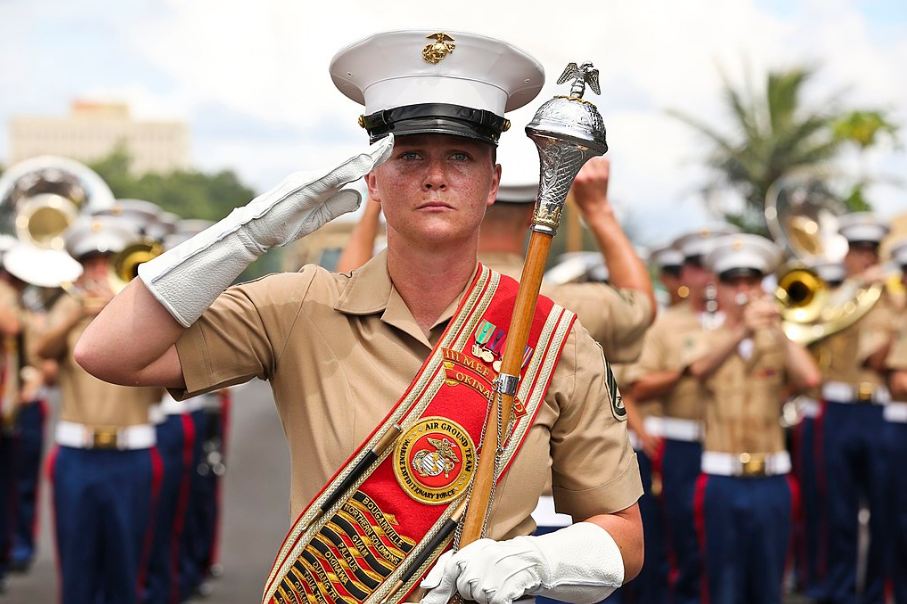
A drum major of the US III Marine Expeditionary Forces Band wearing a baldric
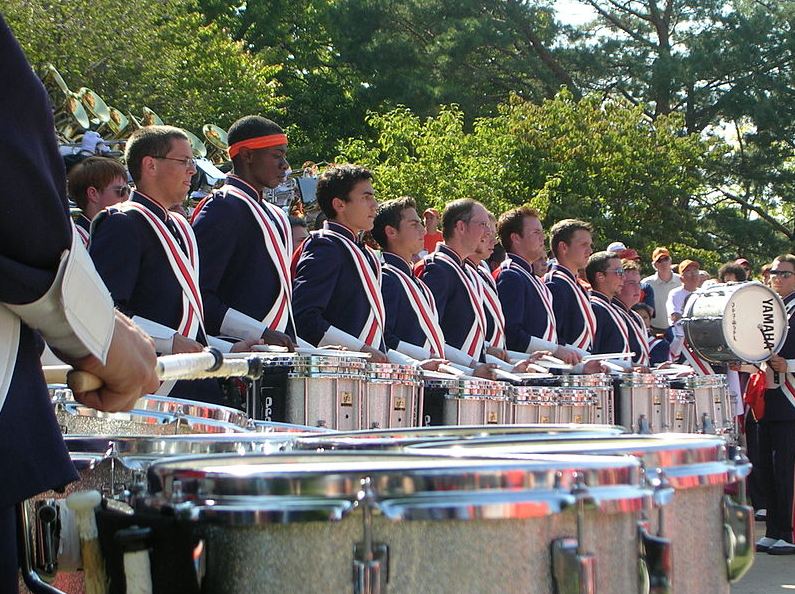
The Marching Illini Drumline with double baldrics
Cloth baldrics were also worn by marching bands, whose instruments, such as drums and bugles, were attached to them as they walked in parades. Nowadays, several military and paramilitary organizations wear baldrics for ceremonial purposes. For instance, the drum major from the US Military Academy band wears a ceremonial baldric decorated with red trimmings and a drumsticks logo, which indicates that the first military musicians were drummers.
The “Marching Illini,” a marching band from the University of Illinois, wore a crossed pair of baldrics until 2009. Each of the two baldrics was worn over each shoulder.
A crossed pair of baldrics is part of a uniform among participants of the Morris dance, a form of English folk dance.

